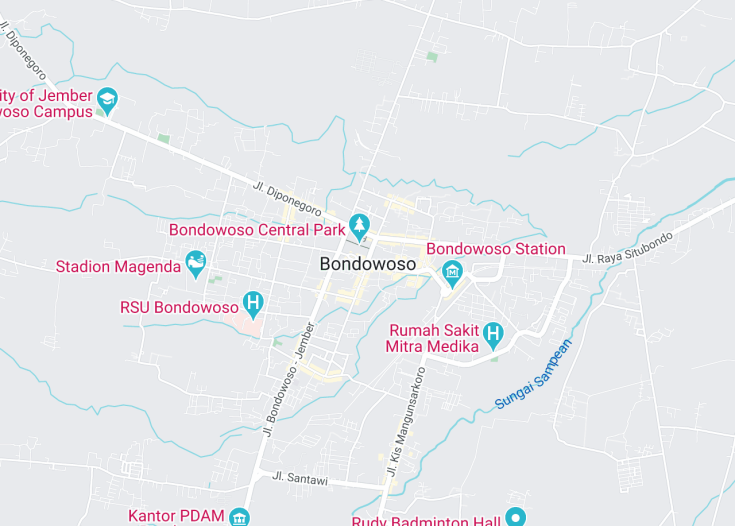Bondowoso, situated in East Java, Indonesia, is a captivating destination known for its enchanting landscapes and rich cultural heritage. This regency boasts a diverse array of natural attractions, including the mystical Ijen Crater with its electric-blue flames and lush coffee plantations. Known for its friendly locals and traditional cuisine, Bondowoso offers an authentic Javanese experience, making it a hidden gem for travelers seeking tranquility and a deep connection with nature. The area’s historical sites complement its natural beauty, providing a holistic travel experience.
Ensure to visit during the dry season, from April to October, to fully enjoy Bondowoso’s outdoor attractions without the hindrance of rain.
Engage with local guides for enriching tours of Ijen Crater and coffee plantations to gain insights into the unique environmental and cultural aspects of Bondowoso.
Top things to do & see in Bondowoso
Select the following sights and activities to discover best tickets and tours available in Bondowoso.
Bondowoso: A Hidden Gem in East Java
| Country | Indonesia |
| Time in Bondowoso | GMT+7 |
| Language spoken | Indonesian |
| Population | 186,000 (2023 est.) |
| Currency | Indonesian Rupiah (IDR ₹) |
| Airports |
|
Bondowoso, located in East Java, Indonesia, may not be as well known as Bali or Jakarta, but it holds its unique charm and historical significance. This region is steeped in culture and history, offering visitors an authentic glimpse into Indonesian traditions and lifestyles. Bondowoso is particularly famous for its coffee plantations and the mystical backdrop of the Ijen Crater, which attracts adventurers and photographers alike.
Known for its friendly locals and tranquil landscapes, Bondowoso offers a refreshing escape from the hustle and bustle of crowded tourist destinations. The town serves as a perfect base for exploring the surrounding volcanic areas and is essential for anyone looking to experience raw and untamed nature. Historical sites in Bondowoso, such as the colonial-era buildings, add to the area’s charm, inviting travelers to delve into its colonial past.
Bondowoso is also noted for its local cuisine, heavily influenced by its agricultural activities. Visitors can explore local markets brimming with fresh produce or try traditional dishes that are rarely found outside of this region. Festivals and events based on local folklore and traditions are common, offering tourists a deep dive into the community’s rich cultural tapestry.
This small town’s nuanced blend of history, culture, and nature is what truly defines it. With its increasing accessibility and growing interest in cultural tourism, Bondowoso is slowly emerging as a noteworthy destination on Indonesia’s vast tourist map, enticing those looking to explore beyond the conventional routes.
Where is Bondowoso?
Bondowoso is situated in the eastern part of Java Island in Indonesia, surrounded by mountains and lush landscapes.
Distances:
| Route | Distance by car | Time by car |
|---|---|---|
| Jakarta to Bondowoso | 625 km | 12 hours |
| Surabaya to Bondowoso | 190 km | 4 hours |
| Yogyakarta to Bondowoso | 335 km | 7 hours |
What is Bondowoso famous for?
Bondowoso is renowned for its striking natural scenery, particularly the stunning volcanic landscapes surrounding the Ijen Crater, known for its iconic blue fire phenomenon.
History
Prehistoric Period to Early Cultures
Bondowoso, located in East Java, Indonesia, has a rich history that dates back to prehistoric times. The first inhabitants are believed to be indigenous tribes who lived in the dense forests and fertile plains, subsisting on hunting and basic agriculture. Artifacts and cave paintings in nearby regions suggest a thriving early culture.
13th – 15th Century: Hindu and Buddhist Influences
During the 13th century, Bondowoso, along with other parts of Java, came under the influence of Hindu and Buddhist kingdoms. Majapahit, one of the greatest empires in Indonesian history, included Bondowoso as part of its territory. This period saw a significant development in art, culture, and religion, with the construction of temples and the spread of Hindu-Buddhist beliefs.
16th – 19th Century: Islamic Sultanates and Colonial Struggles
By the 16th century, Islam had begun to take root, replacing earlier Hindu and Buddhist norms. The region witnessed the rise and fall of several Islamic sultanates, which contributed to the cultural richness of Bondowoso. The Dutch colonial period began in the 19th century, bringing new economic activities, including coffee and sugar cane plantations, which dramatically transformed the local economy and landscape.
20th Century: Independence and Modern Development
Bondowoso played its part in the struggle for Indonesian independence from Dutch rule, which was achieved in 1945. Post-independence, Bondowoso faced challenges including modernization and integration into the broader economy of Indonesia. Today, it is known for its agricultural products, particularly coffee, and has experienced gradual industrial growth.
Visit Bondowoso
Exploring Bondowoso
Renowned for its scenic beauty and cultural heritage, Bondowoso offers a variety of attractions. These include the Ijen Crater, famous for its striking blue fire and sulfur mining; the Blawan Waterfall, a majestic natural wonder perfect for nature enthusiasts; and the Paltuding Base Camp which serves as a starting point for adventurous treks. Additionally, the local coffee plantations provide insightful tours that allow visitors to learn more about coffee production.
- Ijen Crater
- Blawan Waterfall
- Paltuding Base Camp
- Coffee Plantation Tours
Festivals and Events
Bondowoso is vibrant with cultural events throughout the year. The Ijen Summer Festival, usually held in mid-year, showcases local art, culture, and coffee products. The Agriculture Festival, occurring in late September, celebrates the area’s farming heritage with exhibitions and market activities.
Best time to visit Bondowoso
The ideal time to visit Bondowoso is between April and October, during the dry season, when the weather is more conducive for outdoor activities and exploring the natural attractions.
Is Bondowoso worth visiting?
Bondowoso is certainly worth visiting for its unique blend of natural beauty, cultural richness, and historical depth. From the mesmerizing blue flames of Ijen Crater to the serene coffee plantations and lively local festivals, Bondowoso offers a diverse experience that caters to both adventure seekers and cultural enthusiasts alike.










